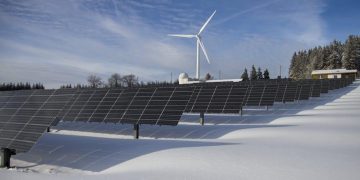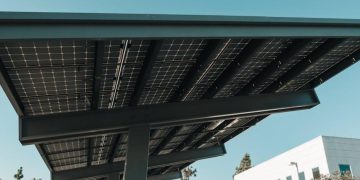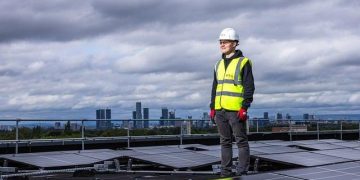In the age of climate consciousness, solar panels have become the modern-day emblem of eco-friendly living, glistening atop rooftops across the nation. Yet, beneath their reflective surfaces lies a complex web of financial incentives and policy frameworks designed to make renewable energy accessible. As governments and environmental advocates champion these incentives, a critical question emerges: Who truly reaps the benefits? At the intersection of sustainability and socioeconomics, this article delves into the nuanced reality of solar incentives, exploring whether they disproportionately favor affluent homeowners. By unraveling the layers of tax credits, rebates, and subsidies, we aim to shed light on the broader implications for equity in the renewable energy revolution.
Exploring the Disparity in Solar Incentive Accessibility
In the quest for a sustainable future, solar incentives have emerged as a beacon of hope, promising reduced energy bills and a lighter carbon footprint. However, the accessibility of these incentives often reflects a chasm between different socioeconomic groups. Wealthy homeowners tend to reap the lion’s share of benefits due to several factors:
- Financial Flexibility: The upfront cost of solar installation can be a significant barrier. Wealthier individuals often have the capital to invest in solar systems, taking advantage of tax credits and rebates that may be out of reach for those with less financial leeway.
- Homeownership Stability: Owning a home for the long term is a common characteristic among affluent homeowners, making them more likely to invest in solar technology. In contrast, lower-income families might face frequent relocations or rental situations that limit their ability to install solar panels.
- Access to Information: Those with higher income levels often have better access to information and resources that can help them navigate the complexities of solar incentives, leading to more informed decisions and greater financial benefits.
While these incentives aim to democratize access to renewable energy, the current landscape suggests a skew towards those already in a position of financial strength. This calls for a reevaluation of policy frameworks to ensure a more equitable distribution of solar benefits across all economic strata.

Analyzing Economic Barriers for Low-Income Households
When dissecting the impact of solar incentives, it becomes evident that the economic hurdles faced by low-income households are often overshadowed by the financial agility of their wealthier counterparts. High upfront costs for solar panel installation create a significant barrier, making it difficult for lower-income families to access the benefits of solar energy. Even with incentives in place, the need for initial investment often restricts participation to those who have the capital readily available. Furthermore, limited access to credit and financing options further exacerbate this divide, leaving many low-income families without feasible pathways to adopt solar technology.
- Upfront installation costs remain a substantial hurdle.
- Access to credit and financing is often limited for low-income families.
- Long-term savings from solar energy may not be immediately accessible to those with limited disposable income.
Moreover, the structure of incentives such as tax credits and rebates can inadvertently favor those with higher tax liabilities, which typically excludes lower-income households who might not benefit significantly from such schemes. Geographical disparities also play a role, as incentives and accessibility can vary widely between urban and rural areas, often disadvantaging communities already facing economic challenges. These factors collectively suggest that while solar incentives have the potential to democratize access to renewable energy, without targeted policies addressing these barriers, they may primarily benefit those who are already economically advantaged.

The Role of Policy in Equitable Solar Adoption
Public policy plays a pivotal role in shaping the landscape of solar adoption, acting as a catalyst for equitable access to renewable energy. However, the current structure of incentives often skews towards benefitting those with greater financial resources. This is largely because many of the tax credits and rebates are more accessible to individuals who can afford the upfront costs of solar installations, or those with tax liabilities significant enough to make the most of these incentives. To address these disparities, policymakers must consider implementing strategies that democratize access to solar power.
- Sliding Scale Incentives: Offering higher incentives for lower-income households can help level the playing field.
- Community Solar Programs: These initiatives allow renters and those without ideal rooftop conditions to benefit from solar energy.
- Financing Assistance: Providing low-interest loans or grants can reduce the financial barriers to entry for underrepresented groups.
By re-evaluating and restructuring policies, we can ensure that the benefits of solar technology are distributed more equitably across different socioeconomic groups. This requires a concerted effort from both government and industry stakeholders to create a sustainable and inclusive energy future.

Strategic Recommendations for Inclusive Solar Incentive Programs
To ensure that solar incentive programs are equitable and accessible to all socioeconomic groups, several strategic recommendations can be considered. These programs should prioritize inclusivity by addressing systemic barriers that may prevent low-income households from participating. Subsidizing upfront costs for solar installations can significantly lower the financial barriers, making it feasible for a broader audience. Additionally, creating community solar projects can allow renters and those without suitable rooftops to partake in solar benefits, broadening the scope of participants beyond wealthy homeowners.
Another effective approach is to implement tiered incentive structures that offer higher benefits to low and moderate-income households, ensuring that the incentives are more appealing and accessible to them. Policymakers could also explore partnerships with local financial institutions to provide low-interest loans or grants tailored for solar installations. Educational campaigns are crucial to raise awareness about the benefits and availability of solar programs, especially in underrepresented communities. By fostering a collaborative environment that includes local governments, solar companies, and community organizations, these programs can be designed to be more inclusive and impactful, ensuring that the transition to renewable energy is a shared journey.
Insights and Conclusions
As the sun dips below the horizon, casting its final golden rays across suburban rooftops, the debate over solar incentives continues to cast its own shadows and light. The narrative of solar energy, interwoven with tales of opportunity and inequity, prompts us to consider who truly reaps the rewards of these shining initiatives. Are they a beacon for all, or a gilded opportunity for the few?
As we ponder this, it’s crucial to remember that the path to a sustainable future is paved with both challenges and possibilities. The conversation about solar incentives is not merely about financial gain but about envisioning a future where clean energy is accessible to all.
Let us engage with this topic not as passive observers but as active participants, questioning, exploring, and striving for solutions that illuminate every corner of our society. The sun’s energy is abundant and, with thoughtful policy and innovation, so too can be its benefits. In the quest for equity and sustainability, may we find that balance where the warmth of the sun is felt equally by all.
And so, as we close this chapter, the dialogue continues, much like the ever-revolving dance between earth and sun, urging us to look forward, question deeply, and act wisely.

































